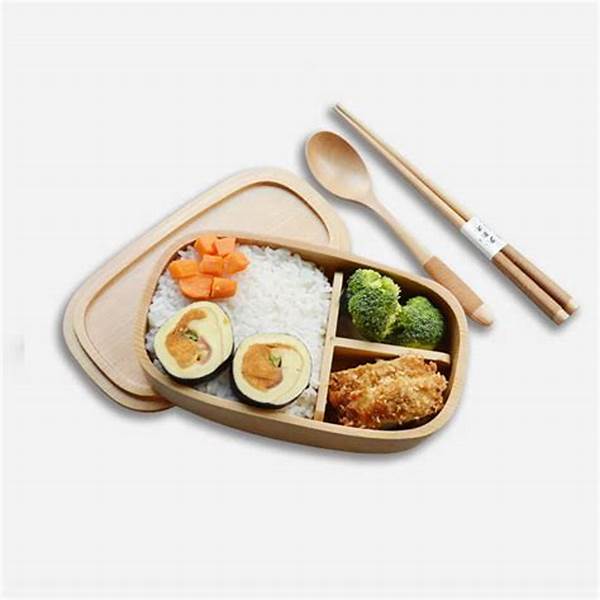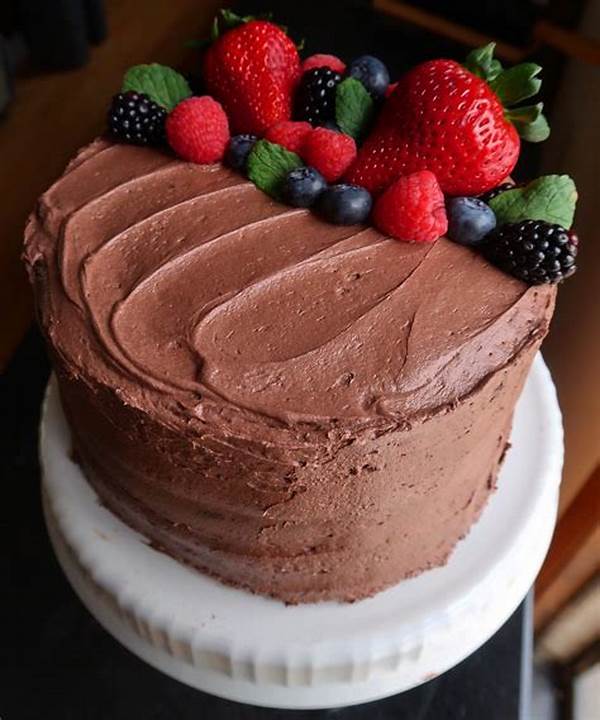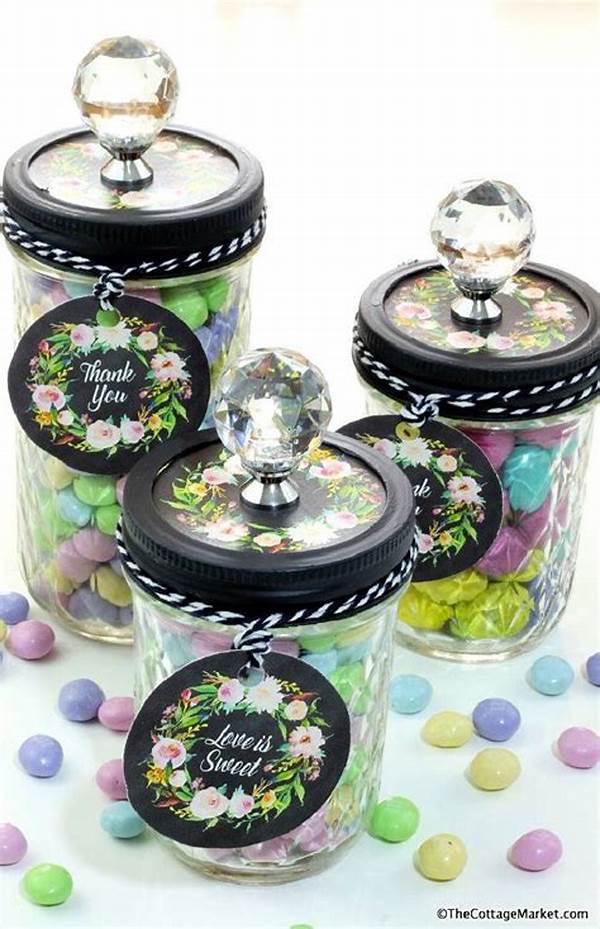In a quiet corner of Tokyo, autumn leaves whispered secrets only the wind knew. Akira, a dedicated artist of bento, was lost in his world of taste and simplicity. It was in these minimalistic creations that he found solace, crafting every meal with precision, each bento a story of its own. His journey with minimalist Japanese lunch boxes began not just as an artistic venture, but as a personal quest to connect with his roots and share his passion for uncomplicated elegance with others.
Read Now : Simple Gluten-free Baking Ideas
The Art of Minimalism in Japanese Lunch Boxes
Akira’s kitchen was a haven of minimalist Japanese lunch boxes, where less truly was more. With delicate slices of sashimi and a nest of perfectly cooked rice, each bento told a story of tradition meeting innovation. As Akira assembled his creations, he remembered learning from his grandmother, who taught him that simplicity held the key to beauty. Over the years, his minimalist Japanese lunch boxes became an expression of his heritage and a canvas for culinary art. They provided an insight into the philosophy of Japanese minimalism: every component had purpose, and every bite, intention.
Such is the magic of minimalist Japanese lunch boxes, where flavors are not lost in excess, but elevated in restraint. The boxes, crafted from bamboo or sleek metal, held carefully selected portions, mindful of nutrition yet bursting with taste. It became more than just packing a meal; it was an exercise in mindfulness and appreciation of the present. For Akira, and for many like him, these lunch boxes were not just meals—they were an invitation to embrace tranquility and the art of living.
Elements of Minimalist Japanese Lunch Boxes
1. The first time Akira crafted a minimalist Japanese lunch box, he felt an unspoken connection to his heritage. Each ingredient had a role to play, creating harmony with every bite.
2. Choosing the freshest ingredients, Akira realized that in minimalist Japanese lunch boxes, nature’s own flavors needed no enhancement—just a little guidance.
3. His grandmother’s wisdom echoed through generations, teaching Akira that minimalist Japanese lunch boxes were about balance—an art as much as a science.
4. Experimenting with colors and textures, Akira found joy in the understated sophistication of minimalist Japanese lunch boxes, where rice, protein, and veggies danced together.
5. Akira’s minimalist Japanese lunch boxes became a testament to his philosophy—much like life, simplicity and intention crafted the deepest experiences.
The Cultural Significance of Minimalist Japanese Lunch Boxes
In Japan, every meal is a spiritual experience, steeped in tradition and thoughtfulness—traits embodied by the minimalist Japanese lunch boxes that Akira so lovingly prepared. These meal containers resembled tiny gateways into a world of minimalism, where each compartment revealed a story, crafted with care and authenticity. As Akira recalled his childhood, he remembered how his grandmother would prepare lunch boxes that seemed like delicate works of art. He’d lose himself in the gentle brushstrokes of perfectly marinated vegetables, tamagoyaki, and delicately sliced fruits.
The minimalist Japanese lunch boxes embraced imperfection, valuing human touch over machine precision. They were a celebration of time-honored craftsmanship, their appeal rooted not in opulence but in the raw beauty of simplicity. As Akira shared these meals with his friends, he noticed their admiration for the artistry, the thoughtfulness in every preparation. What had started as a personal exploration of cultural identity transformed into a shared appreciation for tradition, and a reminder of the peace found in simplicity.
Crafting the Perfect Minimalist Japanese Lunch Box
1. Preparing minimalist Japanese lunch boxes is a journey in celebrating simplicity and the elegance of restraint.
2. Akira carefully selected each ingredient, honoring its natural flavor, a hallmark of minimalist Japanese lunch boxes.
3. Each slice of fish and grain of rice spoke of Akira’s dedication to preserving authenticity.
4. Colors in minimalist Japanese lunch boxes needed no enhancement, each natural hue was a brush of creativity.
5. Seasonality dictated the choices, ensuring each minimalist Japanese lunch box was a symphony in taste.
Read Now : Greek Grape Leaves Stuffing Method
6. Akira’s artistry lay in his attention to detail, a nod to the delicate beauty of minimalist Japanese lunch boxes.
7. The modular compartments of the lunch boxes encouraged harmonious presentation and proportion.
8. A well-made minimalist Japanese lunch box invited reflection, encouraging appreciation of artisanal skills.
9. Akira’s aim was for the box to inspire joy, suggestive of the Zen philosophies underpinning Japanese minimalism.
10. Each minimalist Japanese lunch box was an exercise in discipline, achieving complexity through simplicity.
The Journey of a Craftsman
Akira’s life was an ongoing masterpiece, much like the minimalist Japanese lunch boxes he crafted. Before starting his day in the kitchen, he spent moments in quiet reflection, considering the balance of flavors and the stories he wished to tell. The ingredients reflected not only nutrition but a dialogue between nature and creator. In a world bustling with noise, his creations brought whispers of tranquility. His path was not merely culinary; it was an exploration of essence and form.
Customers would regularly visit Akira’s humble shop just to marvel at his minimalist Japanese lunch boxes, drawn to the humble elegance that mirrored the philosophy of Zen. Those who tasted his offerings found moments of serenity, a gentle reminder that beauty resided in the unassuming. To Akira, each lunch box was a portrayal of life’s quiet poetry, affirming that minimalism was not about scarcity, but a deeper enrichment of experience.
In turn, Akira’s reputation grew, not for grand gestures, but for his dedication to the subtle art of creating minimalist Japanese lunch boxes. He wasn’t merely feeding people; he was inviting them to engage in a mindful appreciation of the meal. It was an invitation to slow down and savor every element while acknowledging its harmonious contribution to the whole. This journey of craft and thought embodied Akira’s philosophy and left a legacy for those who chose to embrace it.
The Legacy of Simplicity
As days turned into years, Akira realized that his minimalist Japanese lunch boxes were not just meals but legacies. They captured a way of life, inscribed into each careful dot of wasabi, every perfectly cut vegetable. His creations invited others into a dialogue of tradition and modernity, art and nourishment. It was a journey easily overlooked in the speed of contemporary life but highly rewarding for those who chose to participate in its depth and elegance.
The slow rituals of his craft cultivated patience and joy. Crafting each box was like painting on a canvas where ingredients were colors, and simplicity was the theme. The longevity of Akira’s boxes spoke to their timelessness, a constant in a world of rapid change. Through his minimalist Japanese lunch boxes, he celebrated not only the act of eating but also the mindfulness required to truly appreciate the effort, creativity, and history encapsulated within each meal. Akira had left an indelible mark, a tribute to simplicity, and an embrace of the gentle beauty of minimalist Japanese lunch boxes.
A Lasting Impression
As Akira closed his shop each evening, remnants of laughter and satisfaction lingered in the air. The humble creations known as minimalist Japanese lunch boxes had found their way into many hearts. Each bento had an unspoken narrative, a connection forged through shared appreciation for culture and craftsmanship. Reflecting on his journey, Akira knew he had succeeded in his mission to honor tradition while inviting others to savor its serene beauty.
His children, too, had learned the art, carrying forward the legacy. The lessons from minimalist Japanese lunch boxes extended beyond the culinary arts—they taught about life’s priorities, focusing on essentials, and finding peace in the midst of chaos. Akira often marveled at how something so simple could hold so much meaning, how acts of thoughtful preparation and presentation made each meal significant. The essence of his craft was profoundly personal and shared, rooted in the heart of Japanese culture and beyond.




